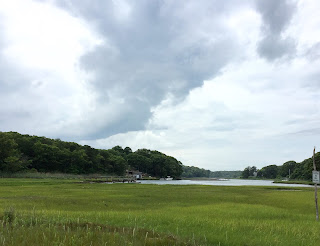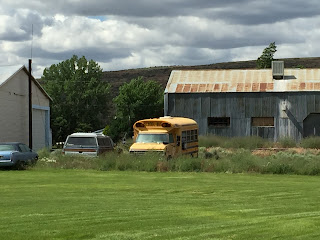How are you at putting people in your paintings? It came up this week when some of us got the courage up to include a figure walking through the low tide. I say "us", but I confess none of the brave ones were me."Too corny"I say, or "too uptight".
Actually, it's really fun to to fill a page with simple shapes that add up to figures . Let's practice for a while and share our discoveries in critique.
 Here are a few more people to play with. Many painters make the arms and legs too short and the head too big. Err on the side of small heads and long arms and legs. I tend to leave out the facial features. The person is sufficiently present before the viewer can tell exactly who it is.
Here are a few more people to play with. Many painters make the arms and legs too short and the head too big. Err on the side of small heads and long arms and legs. I tend to leave out the facial features. The person is sufficiently present before the viewer can tell exactly who it is.











